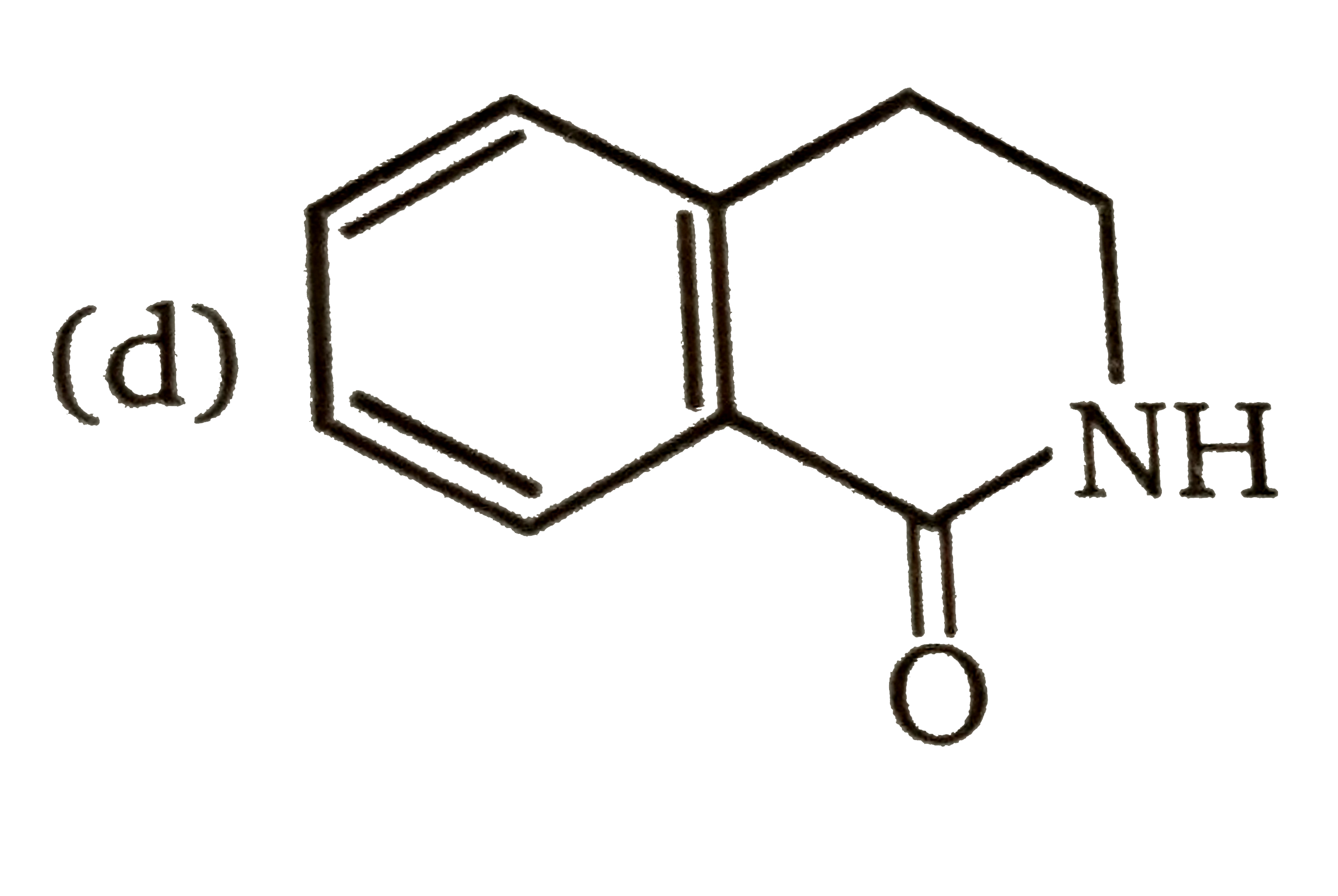Which one of the following compounds undergoes bromination of its aromatic ring (electrophilic aromatic substitution) at the fastest rate ?




The correct Answer is:B
To determine which compound undergoes bromination of its aromatic ring at the fastest rate, we need to analyze the substituents on the aromatic rings in terms of their electronic effects, specifically the +M (mesomeric or resonance donating) and -M (mesomeric or resonance withdrawing) effects.
1. Understanding Electrophilic Aromatic Substitution (EAS):
- EAS is a reaction where an electrophile substitutes a hydrogen atom on an aromatic ring. The rate of this reaction depends on the electron density of the aromatic ring.
Hint: Remember that a higher electron density on the aromatic ring makes it more reactive towards electrophiles.
2. Identifying the Effects of Substituents:
- Substituents can either donate electron density (+M effect) or withdraw electron density (-M effect) from the aromatic ring.
- +M groups increase the electron density on the ring, making it more reactive towards electrophiles like bromine.
- -M groups decrease the electron density, making the ring less reactive.
Hint: Focus on how each substituent affects the electron density of the aromatic ring.
3. Analyzing Each Compound:
- Compound A: A cyclic hydrocarbon group attached to a benzene ring. This does not have a +M effect and may not enhance the reactivity significantly.
- Compound B: Contains a nitrogen atom with a lone pair directly attached to the benzene ring. The lone pair can delocalize into the ring, increasing electron density (+M effect).
- Compound C: Has a carbon atom that does not provide a resonance effect with the benzene ring, so it does not enhance reactivity.
- Compound D: Contains a group that pulls electron density away from the ring (-M effect), making it less reactive.
Hint: Compare the ability of each substituent to either donate or withdraw electron density.
4. Determining the Fastest Rate of Bromination:
- Based on the analysis, Compound B has the strongest +M effect due to the lone pair on nitrogen, which increases the electron density of the aromatic ring the most. Therefore, it will undergo bromination at the fastest rate.
Hint: The compound with the strongest +M effect will react the fastest with electrophiles.
Conclusion:
The compound that undergoes bromination of its aromatic ring at the fastest rate is Compound B due to its strong +M effect from the nitrogen atom.
- EAS is a reaction where an electrophile substitutes a hydrogen atom on an aromatic ring. The rate of this reaction depends on the electron density of the aromatic ring.
- Substituents can either donate electron density (+M effect) or withdraw electron density (-M effect) from the aromatic ring.
- +M groups increase the electron density on the ring, making it more reactive towards electrophiles like bromine.
- -M groups decrease the electron density, making the ring less reactive.
- Compound A: A cyclic hydrocarbon group attached to a benzene ring. This does not have a +M effect and may not enhance the reactivity significantly.
- Compound B: Contains a nitrogen atom with a lone pair directly attached to the benzene ring. The lone pair can delocalize into the ring, increasing electron density (+M effect).
- Compound C: Has a carbon atom that does not provide a resonance effect with the benzene ring, so it does not enhance reactivity.
- Compound D: Contains a group that pulls electron density away from the ring (-M effect), making it less reactive.
- Based on the analysis, Compound B has the strongest +M effect due to the lone pair on nitrogen, which increases the electron density of the aromatic ring the most. Therefore, it will undergo bromination at the fastest rate.
The compound that undergoes bromination of its aromatic ring at the fastest rate is Compound B due to its strong +M effect from the nitrogen atom.
Topper's Solved these Questions
- AROMATIC COMPOUNDSBook:MS CHOUHANChapter:AROMATIC COMPOUNDSExercise:Level 1 (Q.31 To Q.60)
Explore 1 Video
- AROMATIC COMPOUNDSBook:MS CHOUHANChapter:AROMATIC COMPOUNDSExercise:Level 1 (Q.121 To Q.150)
Explore 3 Videos
- AN INTRODUCTION TO ORGANIC REACTIONS AND THEIR MECHANISMS ACIDS AND BASESBook:MS CHOUHANChapter:AN INTRODUCTION TO ORGANIC REACTIONS AND THEIR MECHANISMS ACIDS AND BASESExercise:ADDITIONAL QUESTION (SINGLE CORRECT CHOICE TYPE )
Explore 32 Videos
- BIOMOLECULESBook:MS CHOUHANChapter:BIOMOLECULESExercise:Level 2
Explore 1 Video
Similar Questions
Knowledge Check
Which one of the following compounds undergoes bromination on its aromatic ring (electrophilic aromatic substitution) at the fastest rate ?
A B
B C
C D
D
Which one of following compound undergoes bromination of its aromatic ring (electrophilic aromatic substitution) at the faster rate ?
A B
B C
C D
D
Which one of the following compounds undergoes bromination of its aromatic ring at the fastest rate ?
A B
B C
C D
D
Which one of the following compounds in not aromatic?
View SolutionWhich one of the following compounds is not aromatic?
View SolutionWhich one of the following compounds is not aromatic ?
View SolutionFor an electrophilic aromatic substitution reaction
View SolutionWhich of the following compounds undergoes nitration at fastest rate ?
View Solution

